A few from a recent trip to Africa . . . .
Below, porters struggling at about 18,000 feet on Mt. Kilimanjaro, Tanzania. Mt. Mawenzi, 16,889 feet, is the peak in the background. Shira, Mawenzi and Kibo are all part of Kilimanjaro. I made it to the summit at 19,340 feet in October.
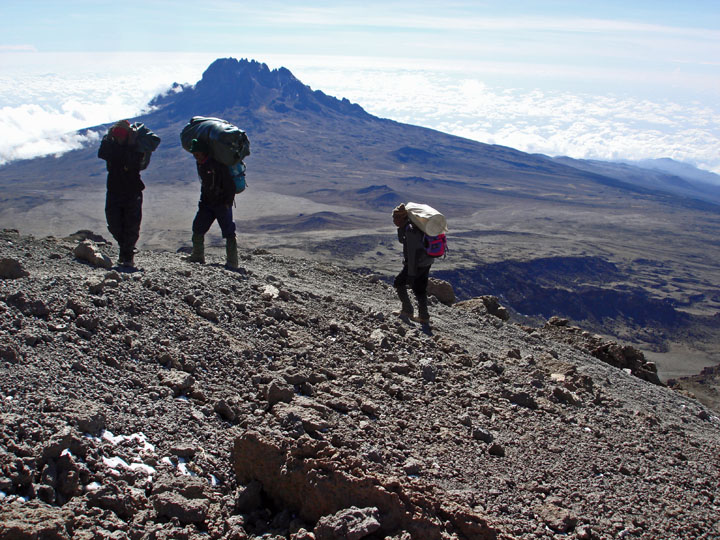
Below, a portrait I like of one of our assistant guides on the climb up the Barranco Wall. He was conversant in Swahili, English, French and Spanish. His would be one of the highest paying jobs in Tanzania at about $3,500 US per year. He's married with a son and his apartment rents for $200 a month, which he thought was very high. He was very curious about living expenses and wages in Canada.
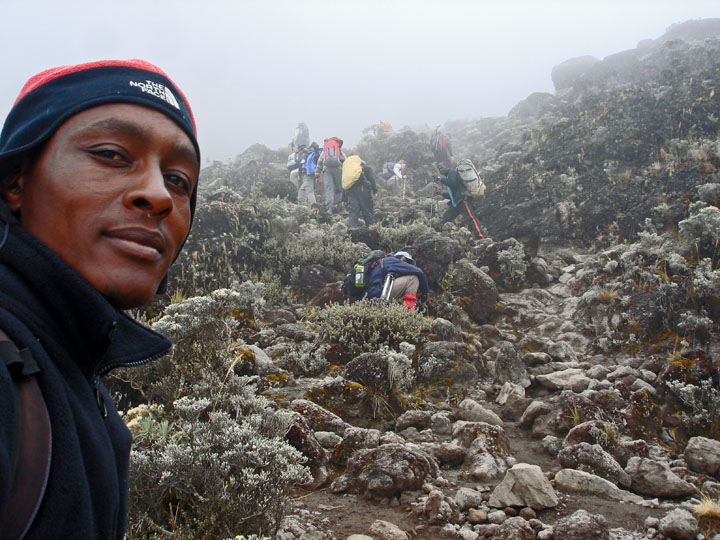
Below, also on Barranco, with a waterfall in the valley below, one of the few places on Kilimanjaro where a fall might be serious.
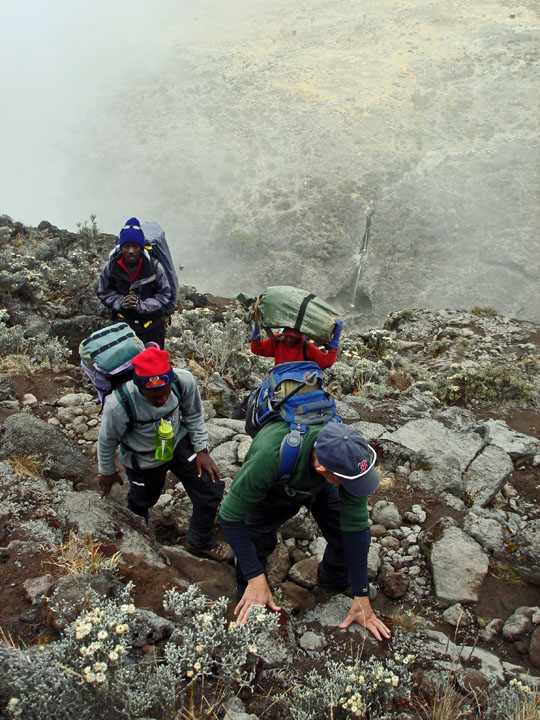
Below, again, about 18,000 feet here. I like the shot for the clouds well below, the curve of the earth and the violence still evident from an ancient volcano. Nothing much lives or grows at this altitude. Our summit day - the seventh day of this trek - started on the nearest spine below. Although obviously only a short distance, it was at least four hours to reach this spot. At the summit, there is about 50% less oxygen than at sea level. Only one of our overall group of 13 didn't make it to the summit, a young 21 year-old paratrooper just back from 15 months in Iraq. Pulmonary Endema forced him off the mountain. Altitude sickness can afflict even the fittest while leaving older and weaker people to continue.

Below, not necessarily a great shot but . . . . . porters run through Barafu camp at 15,300 feet, carrying a trekker in an oxygen bag. There are about 1000 emergency evacuations of Kilimanjaro every year, about three a day, and anywhere from 15 to 30 deaths, primarily altitude sickness related.
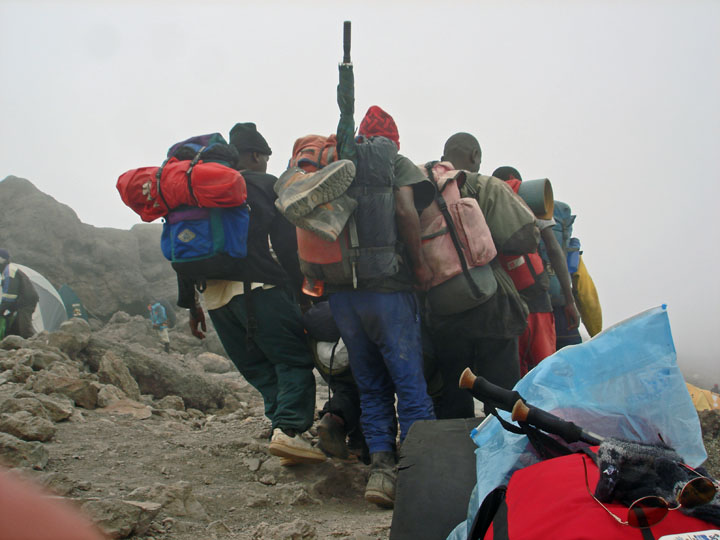
Below, I like this shot of Maasai children . . . . . these kids were very "crusty" to the touch but in good humour. They live in a "boma" on an every increasing pile of goat and cow poop and, according to the Massai elder leading us around, unlikely to see the inside of a school. But they know what a laser is . . . !!! After returning, I noticed a news article regarding a study that suggests North Americans donating clothing to situations like this, while well-intentioned, have likely inhibited the growth of African economies. The conclusion of the study was that no industrial society has ever been built without a textile foundation.
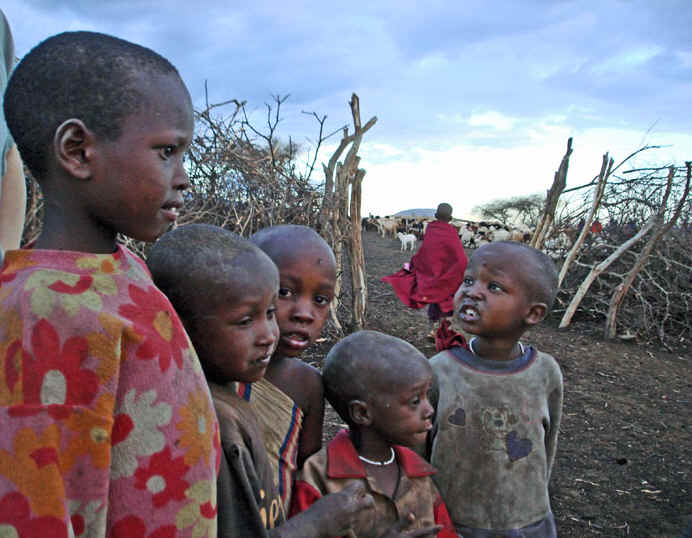
To limit weight, I took only a small, cheap Sony Cybershot on this trip, something I could stuff in a pocket. I left the heavy, expensive equipment at home. Worked out well.
Cowperson

